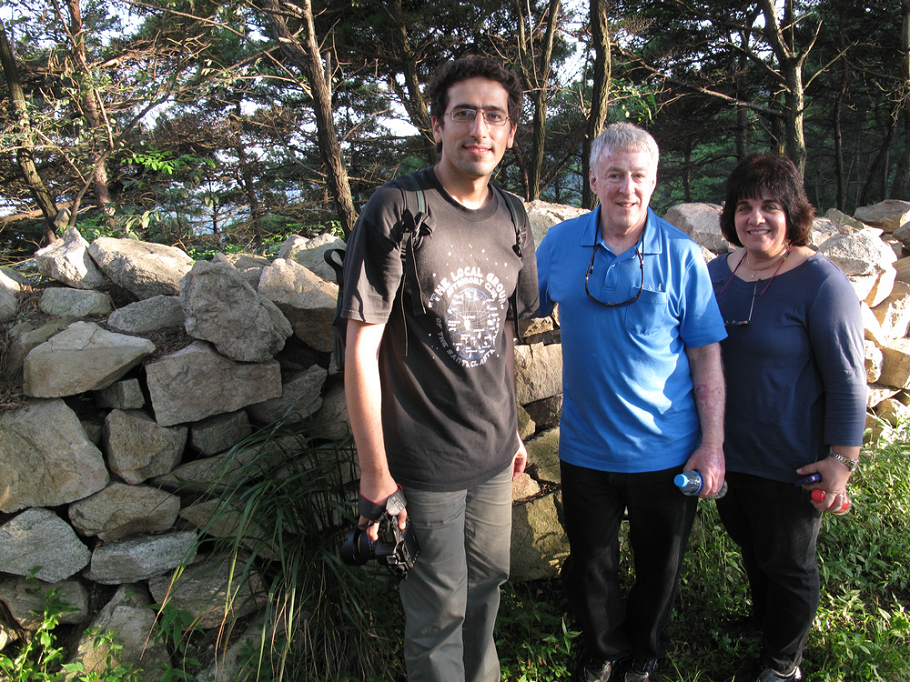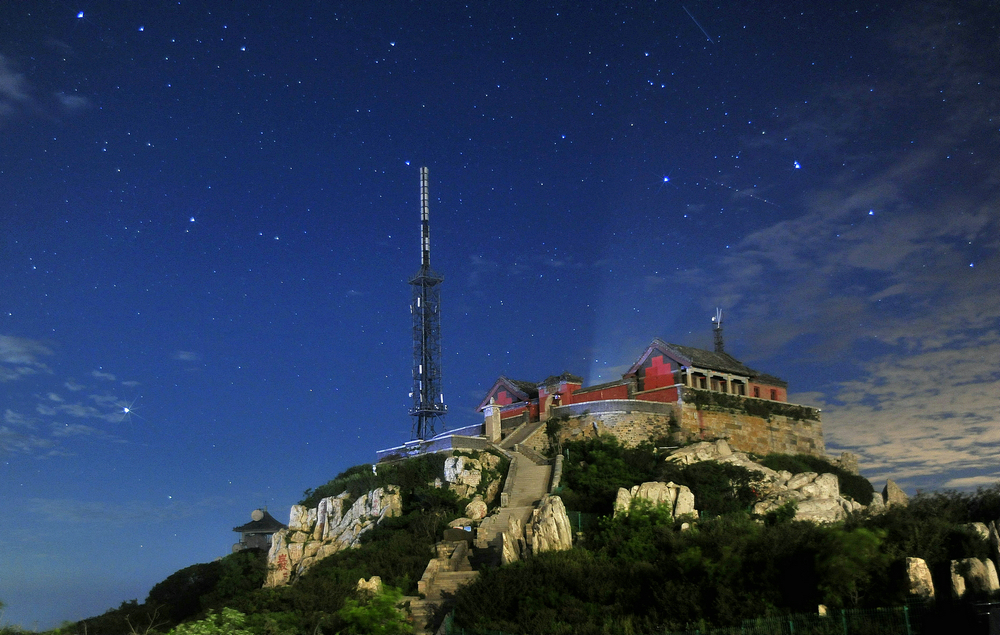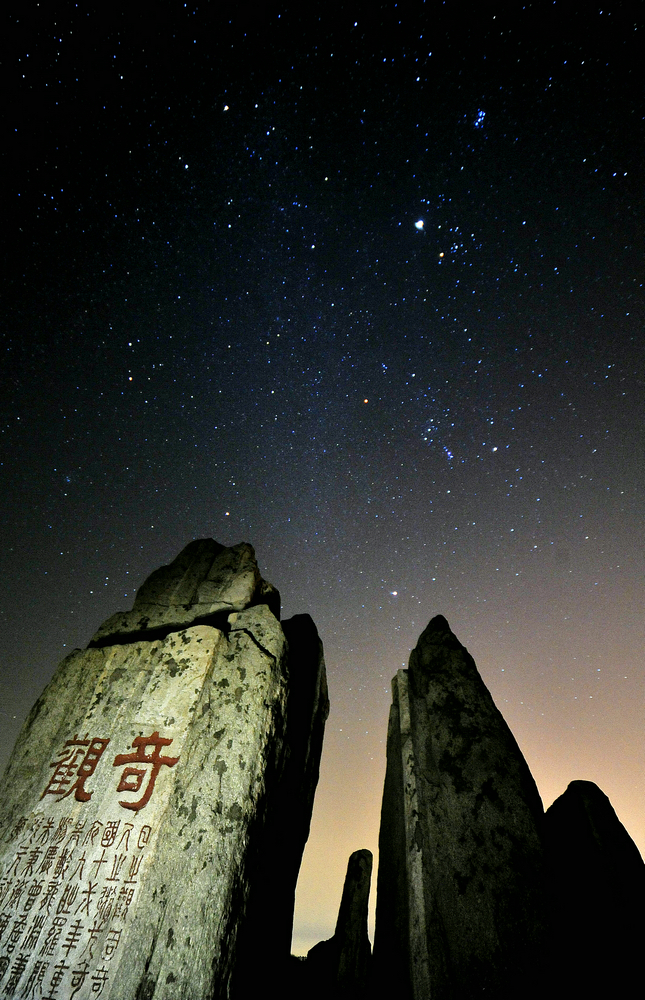Report
By Xiaohua Wang
Mount Tai is located in Shandong Province in eastern China. It is called the "chieftain" among five famous mountains in China. Since the Qin Dynasty, more than 2,000 years ago, 13 emperors have gone to worship at Mount Tai; generations of officials and scholars have left inscriptions on the stone of the mountain. In 1987, UNESCO (United Nations Educational, Scientific and Cultural Organization) declared Mount Tai a World Cultural and Natural Heritage Site. It was the first double heritage site in China.

Daytime at Mount Tai
I live near Mount Tai and am familiar with these natural and cultural landscapes. The 2009 International Year of Astronomy inspired me to start paying close attention to another landscape of the heritage – the starry sky. During the 2012 International Astronomical Union General Assembly in Beijing AWB’s Mike Simmons, Connie Walker, and Babak Tafreshi visited Shandong Province and helped me open up a new chapter of the starry sky view. At Mount Tai we saw Venus and Auriga (the Chinese call them “the five carriages”) rise over Jade Emperor Peak, which according to ancient Chinese culture was a place from which to communicate with heaven. Viewing the starry sky at Mount Tai connects me with history and is a divine experience. Last winter, I took a photograph on the peak of Mount Tai: Gothic stones were pointing out to the starry sky, framed by Jupiter and the Winter Hexagon. The big word engraved in the stone is “Qi Guan” (Amazing Landscape). Astronomers have no borders, and mankind shares one starry sky.

AWB’s Babak Tafreshi, Mike Simmons, and Connie Walker visited Mount Tai.

Mount Tai at night

Gothic stones are pointing out to the starry sky.
In 1992, nine celebrities visited Mount Tai on an autumn night. They were amazed and said, “The day is wonderful, and the night is even more wonderful!” However, after 90 years, light pollution has appeared at Mount Tai. The city of Tai’an near the mountain has grown 30-fold; it has a population of nearly 5.5 million and consumes 10 billion KWH of electricity a year.

Light pollution has appeared.
It is our responsibility to control light pollution and protect the heritage of the starry sky. Since 2011, the Starry Sky Project of China has been working for designation, under IDA standards, of the “Seven Stars Mesa of Starlight Park & Protected Area” and the “Dream Starry Sky of Starlight Theme Park” near Mount Tai. At the same time, the Starry Sky Commission of China is beginning its work in Beijing. The work of starry sky protection in China will move on from Mount Tai to the entire country.
###
 Xiaohua Wang is an amateur astronomer and a photographer from China. He has been focusing on light pollution since 2009, the “International Year of Astronomy”. His “Dark Skies of The Great Wall” photography exhibit won an award in The World at Night events in 2011. He founded the “Starry Sky Project of China” in collaboration with AWB and other international associations. Xiaohua is the director of the Beijing chapter of the International Dark-Sky Association, and is working to develop two starlight parks in Shandong, China.
Xiaohua Wang is an amateur astronomer and a photographer from China. He has been focusing on light pollution since 2009, the “International Year of Astronomy”. His “Dark Skies of The Great Wall” photography exhibit won an award in The World at Night events in 2011. He founded the “Starry Sky Project of China” in collaboration with AWB and other international associations. Xiaohua is the director of the Beijing chapter of the International Dark-Sky Association, and is working to develop two starlight parks in Shandong, China.








Comments